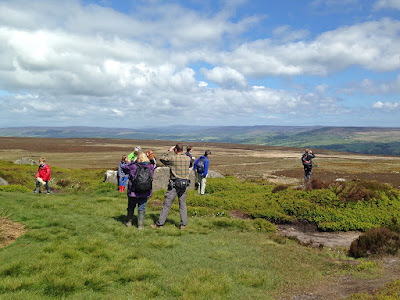At 8:30 am the reserve team opened the moth traps they'd set the night before. They was an incredible array of moths for us to see, hold and study. We then placed the moths safely in the hedge once they had been catalogued.
Checking through the moths
Buff Ermine Moth
Clouded Border Moth
Common Swift Moth
Elephant Hawk-moth
Elephant Hawk-moth
Ghost Moth (male top, female below)
Buff Ermine Moth
Then it was time for the small-mammal survey. The Rodley mammal experts had laid safe mammal traps near the visitor centre. First we needed to find them; fortunately they were marked with small flags. Around half the traps had something in them: either a Field Mouse or a Bank Vole, though occasionally we found snails inside!
Opening the mammal traps
We then had the opportunity to dissect some Barn Owl pellets!
Pellets are small, sausage-shaped objects, containing the undigested parts of food which are ejected through the mouth. Pellets do not pass through the intestine of birds and are quite different from droppings. They do not smell, and are not unpleasant to work with. They consist of things like bones, teeth, claws and beaks, insect head parts and wing cases, seed husks etc. These are usually enclosed by softer material like fur, feathers and vegetable fibre.
Most birds produce pellets. The more indigestible material there is in the food, the more pellets are produced. The best known birds that produce pellets are the owls and the daytime-hunting birds of prey (raptors). Owl pellets are the easiest to find and study, because they often collect beneath a favoured feeding post or roost. A Barn Owl had been roosting (sleeping) on the reserve recently and the staff had been picking up its pellets as they found them.
Dissecting owl pellets
The day continued with more events: pond dipping, a bug hunt, a wild flower walk, and a trip to the reserve's fish pass. Here's just some of the wildlife we encountered around the reserve:
7-spot Ladybird
Banded Snail
Bullfinch (female)
Chiffchaff
Common Tern with chick
Gadwall with chicks
Small Copper Butterfly
Thanks again to everyone who came to this fabulous event, and special thanks to the staff and volunteers of Rodley Nature Reserve for making us so welcome.



























